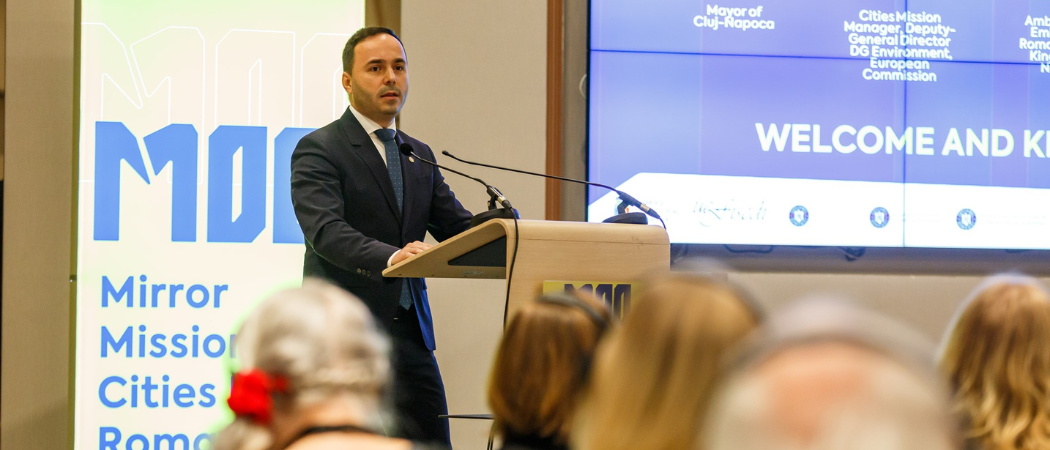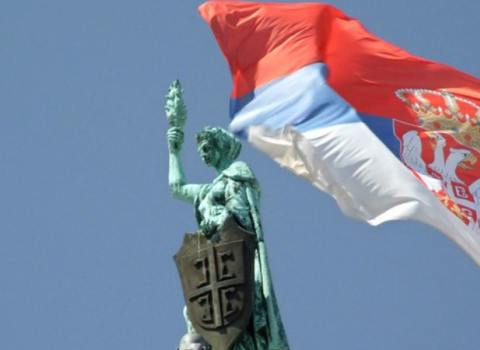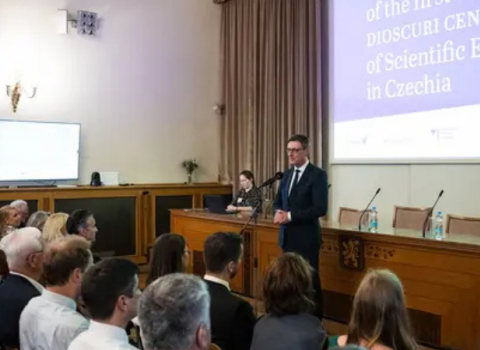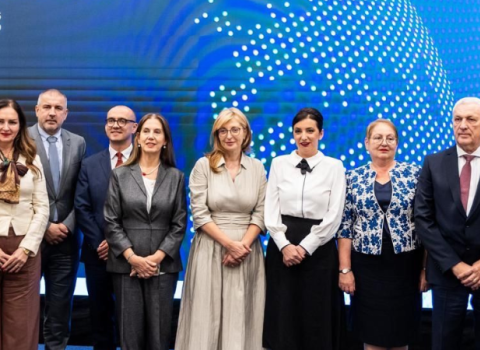While some doubt the effectiveness of the EU Cities Mission, the country is doubling down on making its cities greener, smarter, and more sustainable

Ovidiu Cîmpean, state secretary at Romania’s Ministry of Investments and European Projects. Source, X/Twitter
In December last year, the Romanian government launched Mirror Mission 100 (M100), a national hub coordinated at inter-ministerial level to help ten cities in less-developed regions speed up their green transition.
The M100 initiative intends to build upon the success of the three cities of Cluj-Napoca, Suceava, and Bucharest's Sector 2, which are taking part in the EU’s Horizon Europe Mission to deliver 100 smart and climate-neutral cities by 2030.
"We wanted to apply the idea of no city left behind, and that's how the idea of M100 came about," said Adrian Curaj, director of the Executive Agency for Higher Education, Research, Development and Innovation Funding, which serves as the secretariat for M100.
M100, which aims to attract investments of €1 billion up to 2030, shows the government is doubling down on the ambitions of the EU Cities Mission. And while M100 has been officially described as a knowledge-sharing hub, a conversation with Ovidiu Cîmpean, state secretary in the Ministry of Investments and European Projects, revealed the stakes are much higher.
Cîmpean said the Ministry of Energy will provide approximately €300 million to support renewable energy production, hydrogen-fuelled transport, electric transport, and energy efficiency projects in public buildings, and the government is looking elsewhere for funding. "Discussions are also underway with the Norwegian fund, Norway Grants, to establish a Green Cities programme to finance climate action plans."
The launch of M100 took place during a conference at which representatives of the European Commission’s directorate general for research and innovation met to discuss the progress of the EU Cities Mission. The Mission, launched in 2021, has €360 million in Horizon Europe funding to promote sustainable transport and mobility, energy efficiency and green urban planning.
The Horizon Europe Missions were set up as a new way to bring together researchers, innovators, civil society and governments to address challenges including climate change, cancer treatment, improving cities, protecting the oceans and waterways, and dealing with soil pollution and erosion.
The EU Cities Mission has come under fire for being too fragmented, distributing money without evaluating the impact and ignoring other avenues that could make the EU a leader in relevant technologies, such as solar power, or applying artificial intelligence to mitigate the effects of climate change.
No city left behind
The selection process for M100 is designed to mirror the EU process, with applications accepted from all cities with more than 50,000 residents. The evaluation will be carried out by international experts specialising in urban planning, mobility, and architecture. "It’s a way of showing Europe that we are doing something special," says Curaj.
While the M100 initiative is heavily geared toward the authorities, it includes non-governmental organisations such as Urbanize Hub and the Architect Order of Romania
In addition, Curaj has personally contacted all universities to inform them about M100. While a partnership between the city and a university is not required to apply, he believes the cities will perform better if they collaborate with scientists.
Cîmpean agrees. “We need to involve universities as much as possible in relationships with public authorities,” he said. Cîmpean has a long history of doing just that, dating back to his days working for the Development Director in Cluj-Napoca and then coordinating the successful application for the city to be selected as one of the 100 EU Mission cities. "We built implementation capacity for projects in collaboration with universities," he said. "For example, the Faculty of Political, Administrative, and Communication Sciences oversaw the city's strategic vision,” and, “We achieved modern, sustainable public transportation in collaboration with the Technical University.”
Scientific backbone
Romania’s three EU Mission cities illustrate how universities are playing an essential role in developing climate action plans. The Technical University of Civil Engineering Bucharest (UTCB), which is the scientific backbone for climate transition projects in Sector 2, began collaborating with local authorities in 2019 on a Horizon 2020 project.
"We simply knocked on their door," said Cristiana Croitoru, UTCB leader of this partnership. The collaboration now includes several urban sustainability initiatives spanning research, monitoring, and community engagement.
Working together is complicated because city administrations and universities operate in very different ways. Croitoru thinks that, at this point, it is the universities that need to establish first contact, noting, “Cities lack the capacity for understanding and undertaking projects that rely heavily on science.”
An ongoing research competition that funds Centres of Excellence with a total of €320 million could be another motivator for universities to take part. "I have already taken a look at the proposals," says Curaj. “There are two or three proposals that are in line with our initiative.”
Policy fragmentation
There are those who think scientists should play an even more important role in Romania’s green transition. Ana-Maria Niculicea of the independent think tank Energy Policy Group, which is not affiliated with M100, want to see the formation of an independent scientific council to support Romania's climate efforts. Such a body could provide expert guidance, help integrate fragmented policies, and make recommendations to strengthen the policy framework.
She also expresses a common concern among those outside government, that M100 will be just one of many disparate Romanian climate change initiatives. “Romania currently lacks a climate law that unifies the policy landscape,” Niculicea said.
Disjointed initiatives include a sustainability and climate change department within the presidential administration, an interministerial committee for climate change, a competence centre funded with EU Recovery Funds with over €4 million, and various sustainability departments in various ministries. Niculicea suggests that a climate law could bring these efforts together, increasing policy coherence and effectiveness.
In response Curaj says integration is exactly what they had in mind when forming the M100 platform. “We want to carefully consider complementarities and synergies. We're not trying to administer resources, but to be a facilitation mechanism."
Cîmpean is keen on framing this as a pathway to root and branch change rather than a standalone initiative. "It is not just about funding two parks and a project and then returning to business as usual. We're trying to generate this systemic movement in cities."
The M100 board also hopes for a spillover effect so that the ten cities chosen this year become green city ambassadors, showing other cities how to better prepare for the transition. “After the first six months of next year, the ten cities should be capable, in a rolling effort, to adopt another city in Romania and, together, using various resources, to help it catch up with this dynamic of transformation” says Curaj.
Curaj and Cîmpean are mostly on the road these days, as they lead a promotional M100 tour, that travels across cities in Romania. The events are not aimed just at local authorities but at involving NGOs, regional development agencies and universities, pointing to the breadth of engagement required.





 A unique international forum for public research organisations and companies to connect their external engagement with strategic interests around their R&D system.
A unique international forum for public research organisations and companies to connect their external engagement with strategic interests around their R&D system.